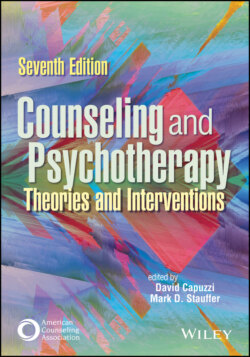Читать книгу Counseling and Psychotherapy - Группа авторов - Страница 64
Sidebar 1.5 Strategy Challenges
ОглавлениеThis section of the chapter described three sets of strategies (for building rapport, for aiding in data gathering, and for adding depth and enhancement to the relationship). Which of the three sets did you find the most challenging as you read the descriptions and examples? What were the reasons you found them challenging? What could you do to meet the challenges you think those skill sets present?
Technical integration is focused on selecting the best treatment option for the individual and the diagnosis and is, as far as possible, evidence based. This type of integrationism uses techniques connected with various theories rather than techniques connected with a single theory or conceptual frame of reference. Arnold Lazarus was one of the pioneers of technical integration, and he called his approach multimodal behavior therapy (Lazarus, 1997). Several resources available to practitioners connect diagnoses and treatment plans based on what the research shows to be the most efficacious. Barlow et al.’s (2011) The Unified Protocol for Transdiagnostic Treatment of Emotional Disorders: Therapist Guide is an excellent example of this type of integration.
Theoretical integration is based on the idea of blending the best components of two or more theories and assuming that the outcomes of counseling or psychotherapy will be better than the result of using either theory by itself. Assimilative integration is focused on a single theoretical orientation but incorporates, on a very selective basis, techniques from other therapeutic paradigms. The advantage of working this way is that the counselor bases the case conceptualization and accompanying treatment plan on a single theory. Finally, common factors integration emphasizes common practices connected with a variety of theories of counseling and psychotherapy. Many of the core dimensions of the helping relationship discussed in this chapter (e.g., empathic understanding, stages, strategies, brief approaches) and common to many theoretical practice sets are drawn on by counselors who see themselves as adhering to a common factors integrative philosophy of counseling.
We wish to emphasize that it takes considerable time as well as years of supervised practice to become familiar with the myriad theories that could be used to guide the process of counseling and psychotherapy. We are not suggesting that by the time they finish this book, readers will be able to move toward an integrative approach, but we want them to be thinking about this as they read and study each of the chapters in this book
